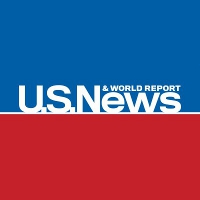- Home
-
About
 Fidelity & Excellence
Fidelity & ExcellenceThomas Aquinas College is unique among American colleges and universities, offering a faithfully Catholic education comprised entirely of the Great Books and classroom discussions.
-
A Liberating Education
 Truth Matters
Truth MattersTruth, and nothing less, sets men free; and because truth is both natural and supernatural, the College’s curriculum aims at both natural and divine wisdom.
-
A Catholic Life
 Under the Light of Faith
Under the Light of FaithThe intellectual tradition and moral teachings of the Catholic Church infuse the whole life of Thomas Aquinas College, illuminating the curriculum and the community alike.
-
Admission & Aid
 Is TAC Right for You?
Is TAC Right for You?Do you enjoy grappling with complex questions? Are you willing to engage in discussions about difficult concepts, with the truth as your ultimate goal?
-
Students & Parents
 Mind, Body & Spirit
Mind, Body & SpiritThere is always something to do at TAC — something worthwhile, something fulfilling, and something geared toward ever-greater spiritual and intellectual growth.
-
Alumni & Careers
 What Can You Do with a Liberal Education?
What Can You Do with a Liberal Education?Nothing speaks more to the versatility of the College’s academic program than the good that our alumni are doing throughout the Church and the world.
- Search
- Giving
Thomas Aquinas College Leaps to No. 35 on U.S. News List for 2020
Thomas Aquinas College has climbed 8 spots in the annual U.S. News and World Report college rankings, from No. 43 to No. 35 among the country’s national liberal arts colleges. The College is one of only two Catholic institutions in the United States to make the top 50.
The newly released 2020 edition of the magazine’s Best Colleges guide also lists Thomas Aquinas College at No. 51 on a select list of 103 schools with the Best Undergraduate Teaching. The College ranks at the very top of the guide’s list for the highest proportion of classes under 20 students (100 percent) and the lowest proportion of classes with more than 50 students (0 percent).
“It has been the commitment of Thomas Aquinas College, ever since its founding, to provide an education that is both excellent and affordable for all who are willing and able to pursue it,” says Admissions Director Jon Daly. “Our continuing rise in secular guides, in terms of quality and value, are signs that we are staying true to this commitment — just as continued praise from Catholic sources, such as the Newman Guide and the National Catholic Register, reflect that we remain as faithful as ever to the Church and her teachings.”
In assembling its annual guide, U.S. News evaluates more than 1,800 four-year colleges and universities in the United States. “The rankings,” its editors explain, “are based on factors that indicate academic quality, such as graduation rates and faculty resources.”


